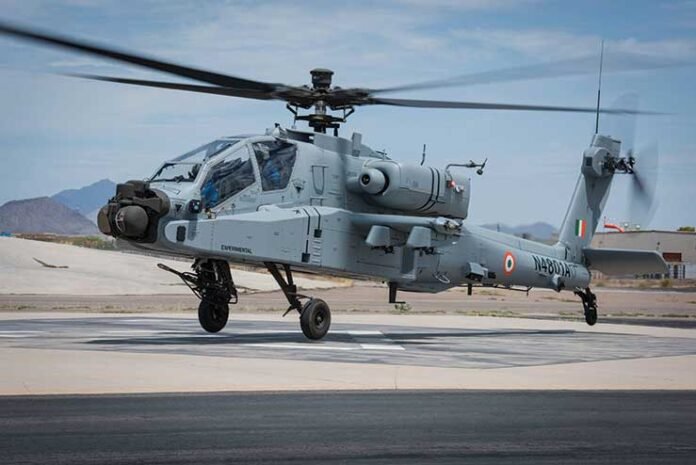New Delhi: India is set to receive three additional Apache attack helicopters from the United States in July 2025, as confirmed by Defence Secretary RK Singh. These helicopters are part of a six-unit order signed in February 2020 for the Indian Army, valued at approximately ₹5,691 crore.
The first three Apaches are expected to arrive by July 15, with the remaining three scheduled for delivery by November 2025. This new batch will supplement the existing fleet of 22 Apaches delivered to the Indian Air Force under a 2015 deal.
The arrival of these helicopters is a significant step in India’s ongoing efforts to modernise and expand its aerial combat capabilities. Apaches, often referred to as “flying tanks,” are seen as a force multiplier, particularly in the context of heightened security concerns following recent military exchanges with Pakistan and the possibility of a two-front threat involving China.
In parallel, India and the United States are preparing to renew their 10-year bilateral defence framework agreement later this year, which will guide cooperation across technology transfer, joint defence production, strategic logistics, and coordinated military exercises. This agreement is expected to further strengthen the long-term strategic partnership between the two countries.
Defence Secretary RK Singh also confirmed progress on India’s indigenous fifth-generation fighter program, the Advanced Medium Combat Aircraft (AMCA).
The contract for the AMCA is anticipated to be signed within the next three to six months, with prototype development and flight testing projected to take about a decade. Meanwhile, India is exploring short-term acquisitions of fifth-generation fighters from allied nations to address immediate operational requirements.
Additionally, India is in discussions with France’s Safran for co-development of advanced fighter jet engines, aiming to overcome delays in engine deliveries from GE Aerospace for the Tejas Light Combat Aircraft and to boost indigenous engine production capabilities. This initiative is critical for achieving greater self-reliance in defence manufacturing.
The urgency to enhance India’s defence posture has intensified following recent operations such as Operation Sindoor, which underscored the importance of robust air defence and rapid military modernisation in the face of evolving regional threats.






